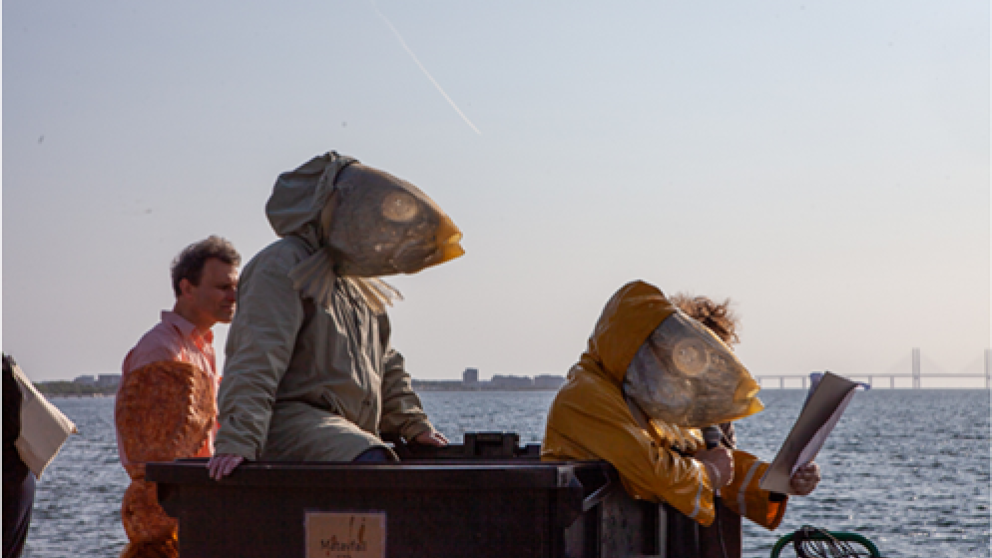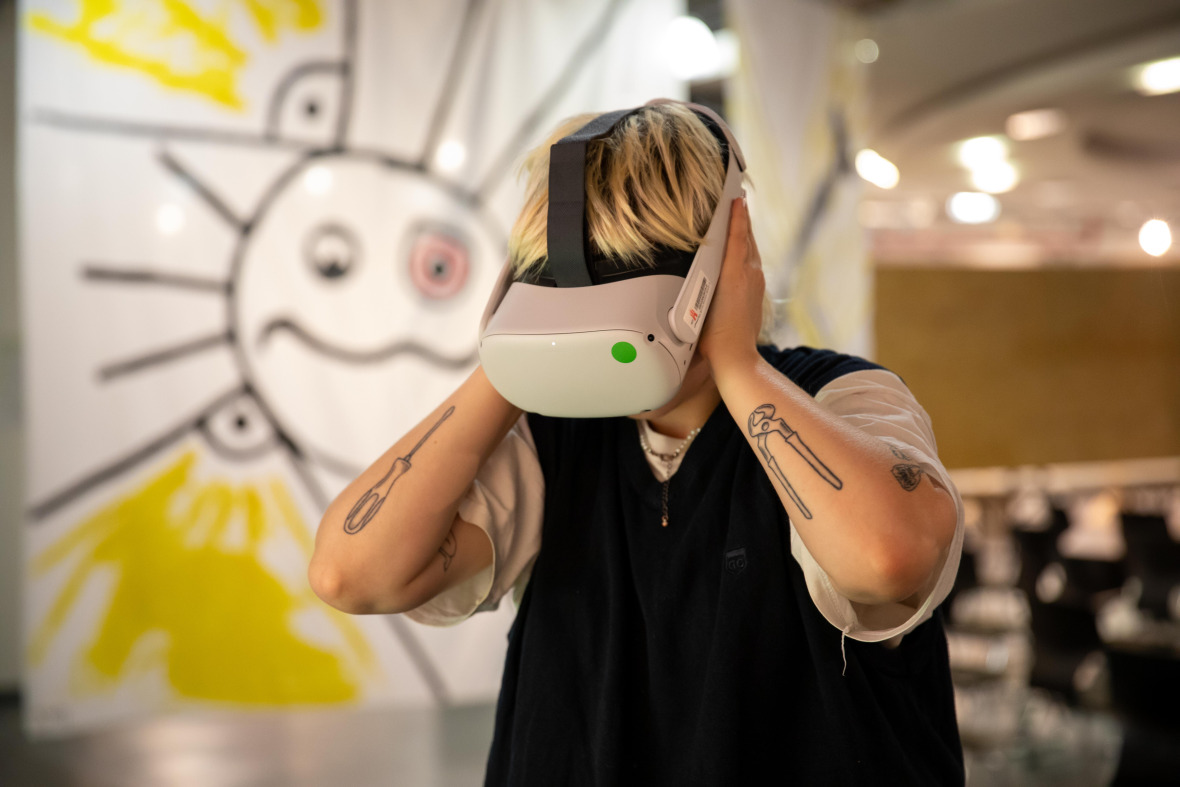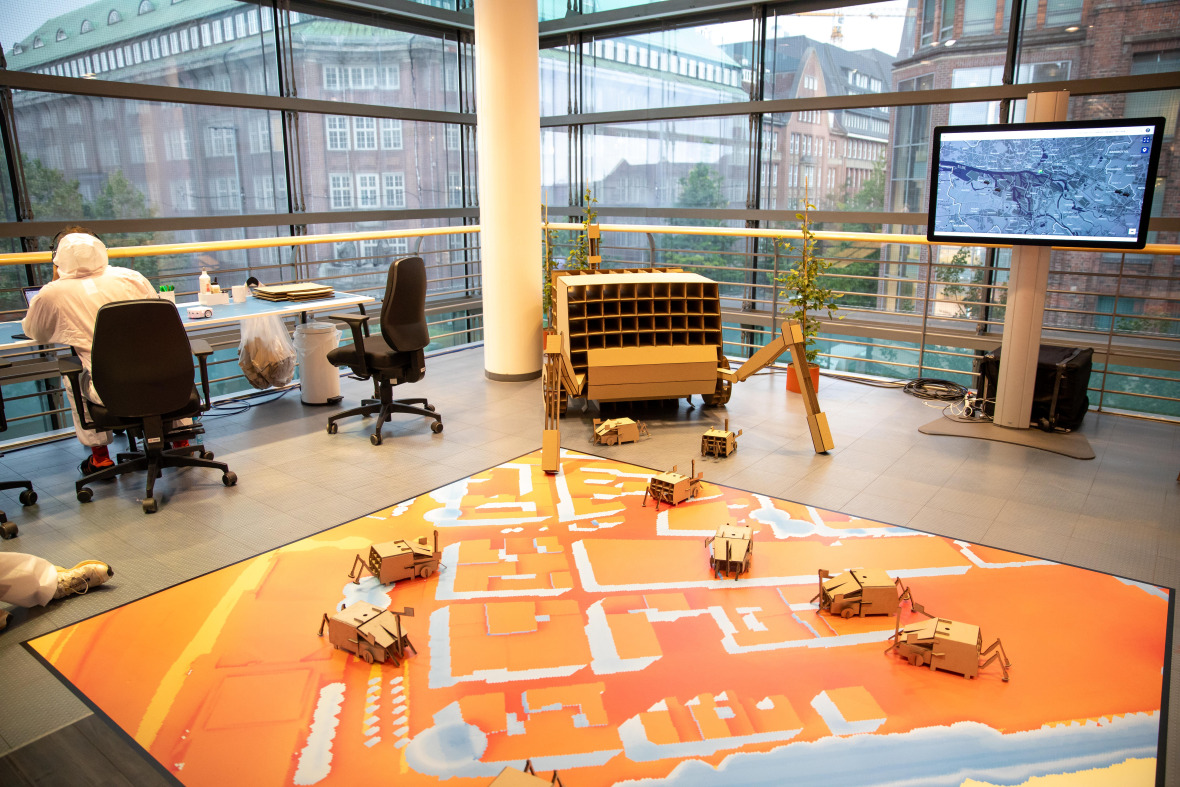Bridging the Gap? CityScienceLab Hamburg: An experimental field for cooperation between art and science
07.12.2023

New ways of collaborating with artists are being trialled at the CityScienceLab in Hamburg. But what goals do artists and scientists pursue when they cooperate? RIFS researcher Teresa Erbach is studying the role of art and culture in transformation processes and evaluated a cooperation programme at HafenCity University Hamburg.
The CityScienceLab (CSL) at HafenCity University Hamburg uses urban data to develop new digital tools for urban planning and digital models of the urban environment. These tools can be used to visualise and simulate complex developments within cities and to support urban stakeholders in decision-making processes. Because the data that they process relates to existing objects and mechanisms, they can be used to forecast future developments, but not to develop new ideas for urban futures or alternative ways of living. Moreover, the emotional aspects of urban development and aesthetic factors tend to fall by the wayside when planners and decision-makers work with digital models.
To compensate for this, in future data storytelling and collaboration with artists are set to play a larger role at the CityScienceLab alongside data analysis and modelling. This September, artists and scientists came together at the CCmCC festival to explore the intersections between art, sustainable urban development and data analysis. In a deep dive into Hamburg’s possible future(s), the festival featured interactive performances, exhibitions, workshops, scientific lectures, serious games, documentary films, immersive experiences and panel discussions.
Visitors to the festival met tree-planting robots guided by local climate data and AI personas that dream of sustainable societies. On the green spaces in front of the building, they explored the debate on invasive species from the perspective of aphids and locust trees, and in the HafenCity quarter, an image generator offered visitors a glimpse of life in HafenCity in 50 years' time. Elsewhere, a film screening provided an entry point for a discussion about the lessons of the past for coastal cities facing the threats of sea level rise and flooding. In a programme rich with scientific and artistic contributions, three projects had a special background as they were developed as part of the CityClimate meets CreativeCoding (CCmCC) programme for art-science cooperation. As part of this collaboration, fifteen artists had created works on the topic of sustainable urban development using the CSL’s digital applications.
What goals do art-science collaborations pursue?
For participants, the festival was a rare and very special opportunity to exchange ideas as artists and scientists on an equal footing. They also praised the cooperation programme ahead of the festival – even if it was dogged by some of the problems often observed in art-science cooperations. One of these problems concerns the clarification and communication of the objectives of such collaborations.
For both artists and scientists, one of the main aims of collaboration is to discover new ways of approaching or thinking about a given topic. Naturally, artists are generally interested in learning about new methods or materials, while scientists – and especially scientific institutions - are often interested in communicating the findings and methods of science to the public. Aspects related to specific projects – such as the inclusion of aesthetic factors in living labs – can also play a role for scientists.
However, these goals are often not properly clarified or communicated in advance. In the case of the project in Hamburg, this was intentionally left open to interpretation. Instead, only a range of topics and methods were specified, which sometimes put the participants in a difficult position, as one of the artists notes:
„The roles and the goals should be clearer. What is the goal? I´m an artist, I do art. Should I help scientists to do science? Or do we do art together? Or what are we doing? Is this rather "shallow" way of work REALLY beneficial to a) science b) environment work c) to art?”
Some artists felt that the expectations connected to the funding they received through the project were unclear and not properly communicated. Scientific institutions often struggle to define and communicate the goals of art-science collaborations and occasionally avoid doing so altogether, possibly due to a lack of experience. However, it may also be due to the fact that there is at least an implicit conflict of objectives. On the one hand, certain expectations or at least hopes are legitimately associated with engaging in art-science collaborations – even if scientific institutions do not clearly define or communicate them. On the other hand, many institutions are wary of imposing any restrictions on participating artists and wish to avoid instrumentalising art.
One possible solution for this dilemma comes from Friedrich von Borries, who suggests in his review of a cooperation programme hosted by the German Environment Agency:
„Die Einbettung von Kunst- und Kulturschaffenden in Projekte, die sich mit umweltpolitischen Fragestellungen beschäftigen, muss nicht die Produktion von „Kunst“ zum Ziel und als Ergebnis haben, sondern könnte durch den Dialog von Kunst und Umweltpolitik etwas „Drittes“ sein, was weder Kunst noch Umweltpolitik ist.“
("The embedding of artists and cultural practitioners in projects that deal with environmental policy issues need not have the production of "art" as its goal and outcome. Rather, by engaging in a dialogue between art and environmental policy, it could give rise to a "third” outcome that is neither art nor environmental policy.")
In contrast to this very open approach, the Fraunhofer Network "Science, Art and Design" issues detailed calls for proposals for the fields of art and design that relate directly to the objectives of individual research projects. Clearly, a broad spectrum of approaches exists, ranging from very open residency programmes to very specific assignments. One insight gained from the CCmCC project in Hamburg is that where the topics and methods of collaboration are specified by a programme, participants tend to want also clearly defined goals. Presumably, the closer the cooperation is and the more it is structured, the more clearly such goals should be defined.
In the case of the CityScienceLab, the cooperation programme was a success despite some issues around the goals and the structure of the programme. The participating researchers found it enriching to engage with unfamiliar perspectives, and the ideas and contacts developed through the programme have paved the way for further transdisciplinary collaboration beyond the project period. The festival was also well received by the public, generated media interest in the work and topics of the CSL, and strengthened and inspired the team at the CSL. In future, however, the focus there will be on longer-term collaborations, with artists joining the CSL for several months at a time in order to enable more in-depth collaboration.



